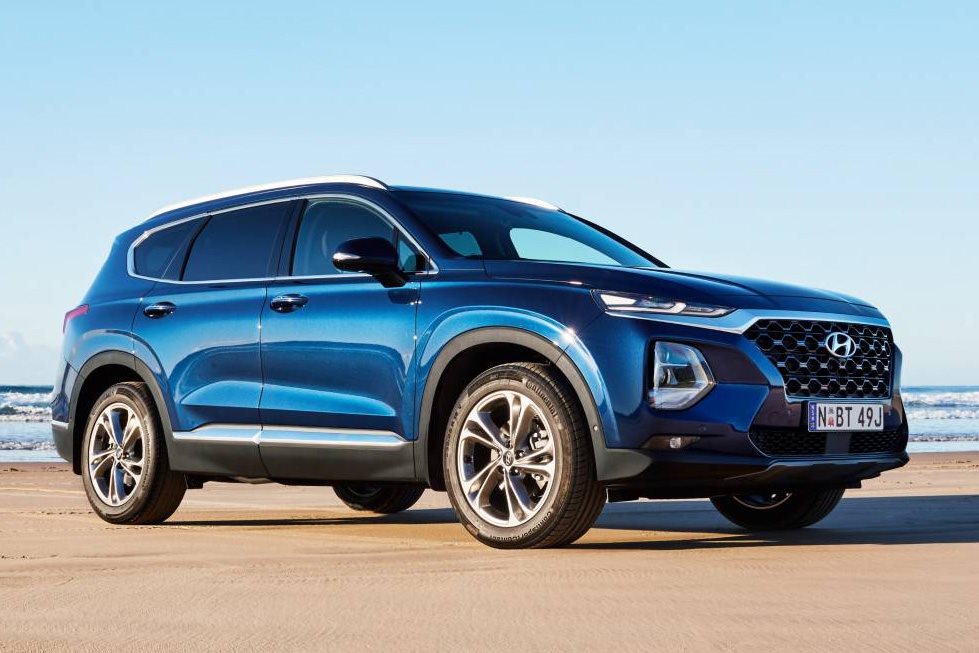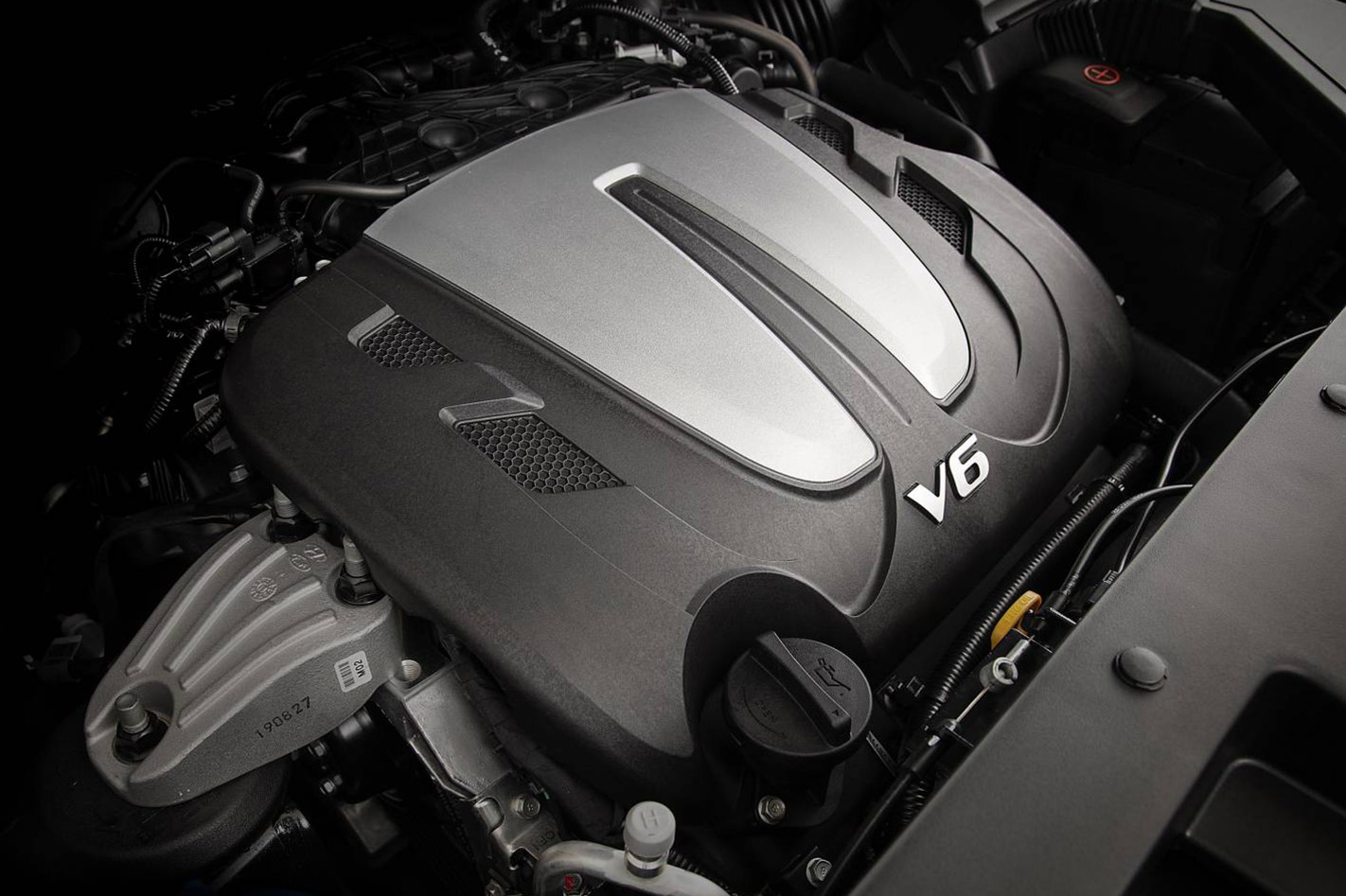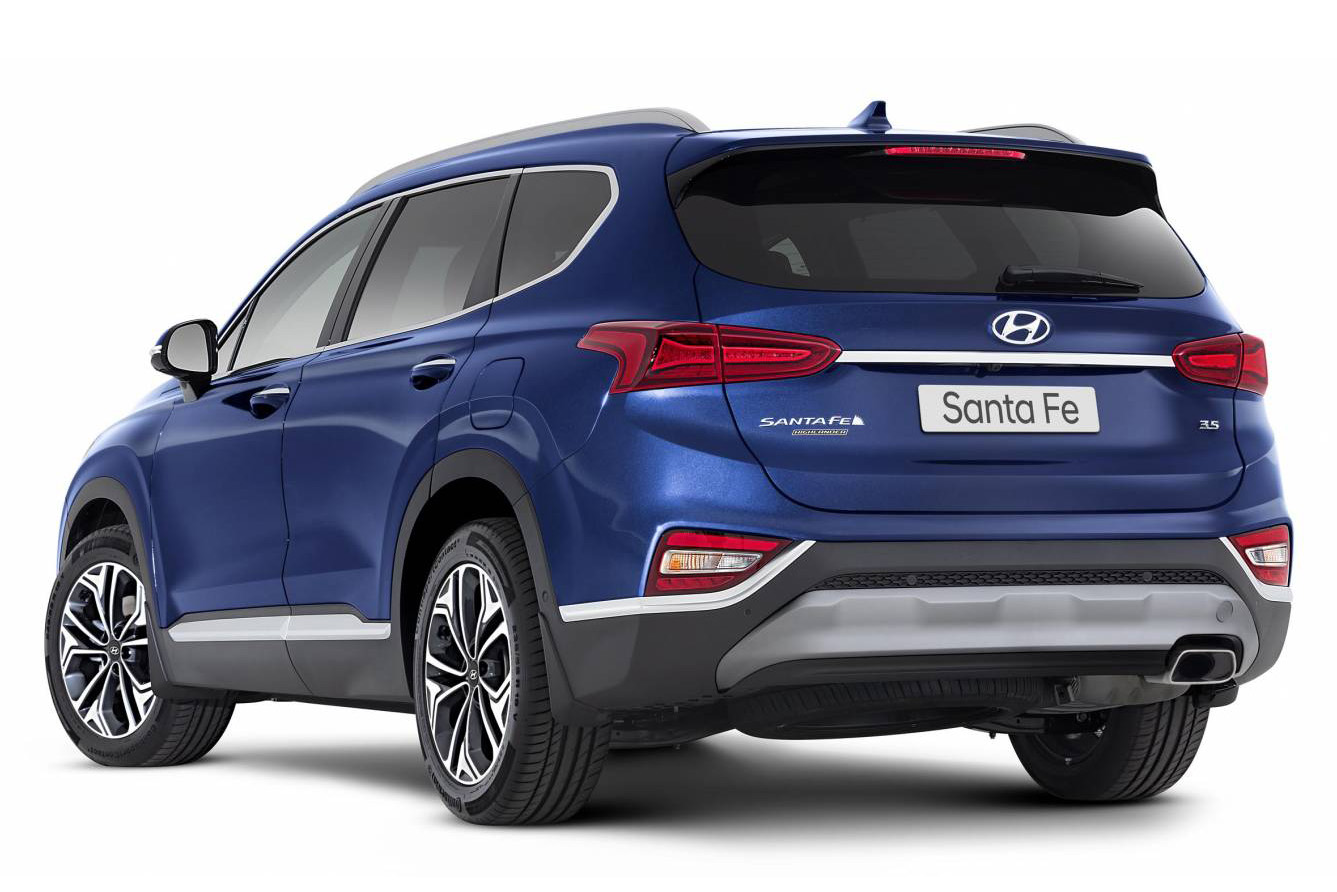
Hyundai has treated its Santa Fe large SUV to a performance upgrade with the previous 2.4-litre four-cylinder making way for a new 3.5-litre V6 petrol engine.
The upgrade of an extra two cylinders takes power up by 68kW and boosts torque by a hearty 95Nm, increasing the maximum output to 206kW and 336Nm.
Despite the extra grunt, the South Korean brand has not increased pricing for the new more potent bunch with the cost of entry remaining at $43,000 for the Active. Above it, the Elite is on offer for an unchanged $51,000, while the range-topping Highlander will cost you $57,500.

While customers wont be paying any extra for the 2020 Santa Fe in the showroom, they will on the forecourt, with the larger petrol using a claimed 10.6 litres of petrol per 100km. That compares with 9.3L/100km for the superseded four-banger.
For those Santa Fe fans that begrudge trips to the servo, a diesel is still on offer in each of the three specification grades and it asks for just 7.5 litres of fuel per 100km. As before, the diesels cost $3000 more than their petrol counterparts and bring a gutsy 440Nm of torque.
Hyundai has not provided corresponding performance figures for the engine upgrade, but it’s safe to assume the seven-seater haul people and things more effortlessly and with typical V6 smoothness.
Complementing the power upgrade, the 2020 range also has a suspension revision with the spring and damper settings retuned to suit the new powertrain.

The V6 is bolted to an eight-speed automatic transmission and sends power to the front wheels, whereas the diesel is paired with an all-wheel drive system for those with more adventurous aspirations.
With the update, the Hyundai aligns more closely with its mechanically related Kia Sorento sister which has been available with a choice of 2.2-litre diesel and 3.5-litre V6 petrol since its most recent refresh in 2017.
Beyond the more potent powertrain update, the Santa Fe continues on with the same levels of specification and equipment.
Highlights include excellent interior ergonomics and high-quality materials and rewarding dynamics, as well as a good suite of driver assistance tech in the form of forward collision avoidance, rear cross-traffic alerts and lane-keeping assistance.




